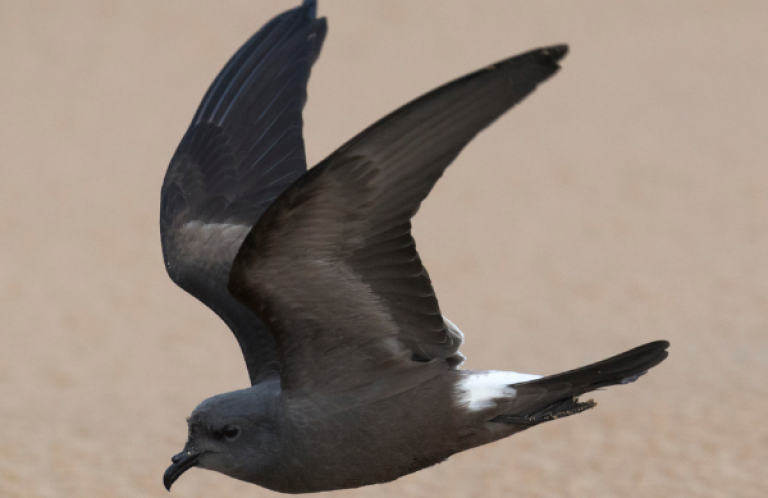New Report to Pompano Beach Commissioners: City Will "Become Overrun with Cats"
 Colony of feral cats by Greg Homel |
|---|
(Washington, D.C., June 28, 2013) American Bird Conservancy (ABC), one of the leading bird conservation organizations in the United States has sent, this week, a new and strongly worded report that warns Pompano Beach City Commissioners that a proposal under consideration by the city to deal with the feral cat issue constitutes “sanctioned abandonment of cats” that will ultimately lead to the city becoming “overrun with feral cats.”
Report author Grant Sizemore, manager of ABC's Cats Indoors Program, says, “City policy-makers are considering proposals that are terribly misguided and that have no foundation in science. The decision-makers are on the verge of being swayed almost entirely by emotional pleas from a small segment of the population. There is no question that if they acquiesce to those few people whose sole motive is to facilitate the ongoing feral cat crisis, the city and its residents will inevitably pay a heavy toll.”
Sizemore said that while his report was written specifically for the Pompano Beach City Commissioners, it has wide application nationally. “There is nothing unique about Pompano Beach's feral cat issues. The 80 million feral cats across the country are absolutely having similarly horrific impacts on and posing threats to hundreds of other communities. Local leaders need to see the science on this and make informed—not emotional—decisions,” he said.
Sizemore's report is broken into three sections. The first, called “The Truth about TNR: Debunking the Claims,” responds to common assertions by cat activists to support an ineffective program, called Trap, Neuter, Release (TNR). TNR traps feral cats, neuters them, and then releases them back onto the streets where they struggle to survive in an inhumane state.
Sizemore debunks assertions by feral cat activists concerning their misuse of a concept called the “vacuum effect.” That concept claims that feral cat colonies actively exclude any and all non-colony cats but draw in cats from the surrounding area whenever a cat is permanently removed. Feral cat activists fail to understand that feral cats generally don't exclude new cats from an area anyway, and if they did, then the same consequences apply to TNR colonies (since they purport to be a feral cat reduction program) as they would in colonies where cats are trapped and removed.
This section also addresses feral cat activists' assertions that since fewer cats are going to shelters, TNR must be working. “Feral cat activists would have us believe that a reduced number of feral cats going to shelters means fewer feral cats. In reality, this number simply represents the increase in cats being re-abandoned to an inhumane life on the streets, where cats are brutally killed by cars, dogs, or a host of wild animals,” Sizemore said.
Last, Sizemore addresses one of the more serious concerns about feral cats: the risk of contracting the parasitic disease toxoplasmosis from feral cats. A cat infected with this disease can shed hundreds of millions of infectious eggs that generally remain infectious for up to 18 months.
“The impacts of toxoplasmosis to humans may be severe. Consequences include sudden abortion of fetuses, fetal developmental defects, blindness, and neurological impairment. It may particularly impact individuals with weakened immune systems. Although contraction of toxoplasmosis may occur by ingesting infectious eggs where cats have defecated in a garden, yard, sandbox, or beach, environmental contamination may be much broader and more dangerous for both humans and wildlife. Potential watershed contamination is a serious risk that may result in additional infections. Several recent studies have now documented such serious impacts on the West Coast and in England as well,” Sizemore says.
The report's second section summarizes and provides key quotes from some of the peer-reviewed scientific literature on the subject of feral cats. Those studies were all published in recent years, from 2003 to 2013.
The last section provides a listing of organizations that have taken a stance against TNR. In addition to ABC, some of those organizations include: The Wildlife Society, People for the Ethical Treatment of Animals, National Association of State Public Health Veterinarians, American Association of Wildlife Veterinarians, the Florida Department of Health, Florida Veterinary Medical Association, and Florida Fish and Wildlife Conservation Commission.
The shocking impacts to wildlife populations from outdoor cats were disclosed in a peer-reviewed study published in late January 2013 and authored by scientists from two of the world's leading science and wildlife organizations: the Smithsonian Conservation Biology Institute and the U.S. Fish and Wildlife Service. Those scientists found that bird and mammal mortality caused by outdoor cats is much higher than has been widely reported, with annual bird mortality now estimated to be 1.4 to 3.7 billion and mammal mortality likely to be 6.9 to 20.7 billion individuals.
“The bottom line on this issue is absolutely clear. Feral and outdoor cats are taking a horrific toll on wildlife. Equally clear is that the potential human health impacts are very real. Decision-makers should give serious pause to endangering their community's health only to maintain domestic cats in an unnatural and feral state, no matter the human or wildlife costs,” Sizemore said.


















































